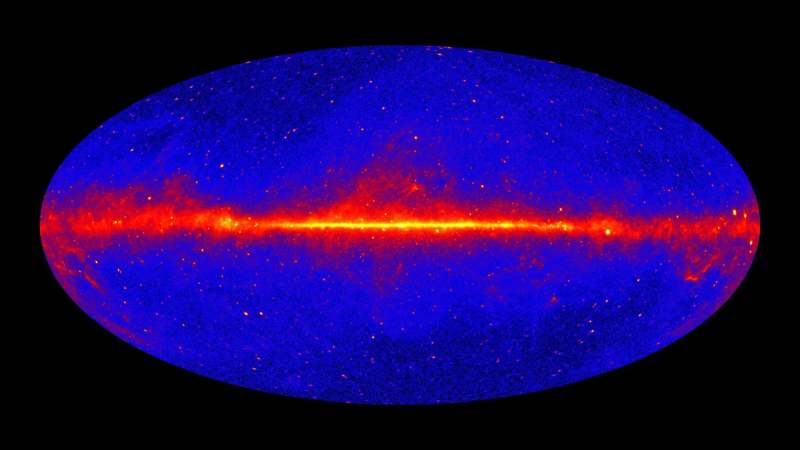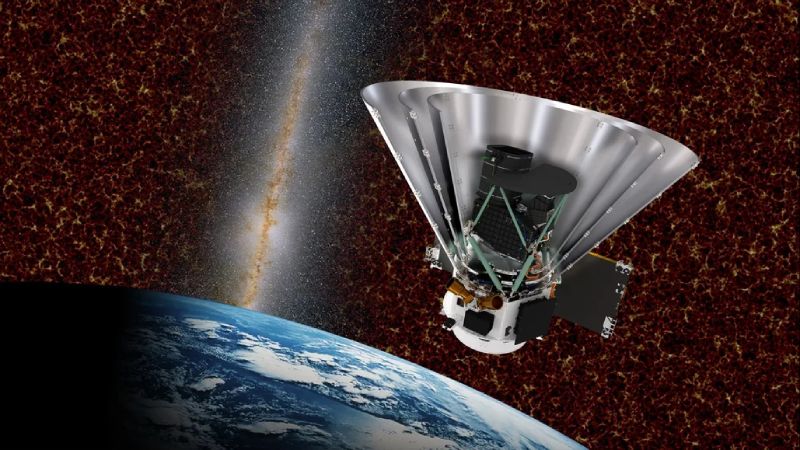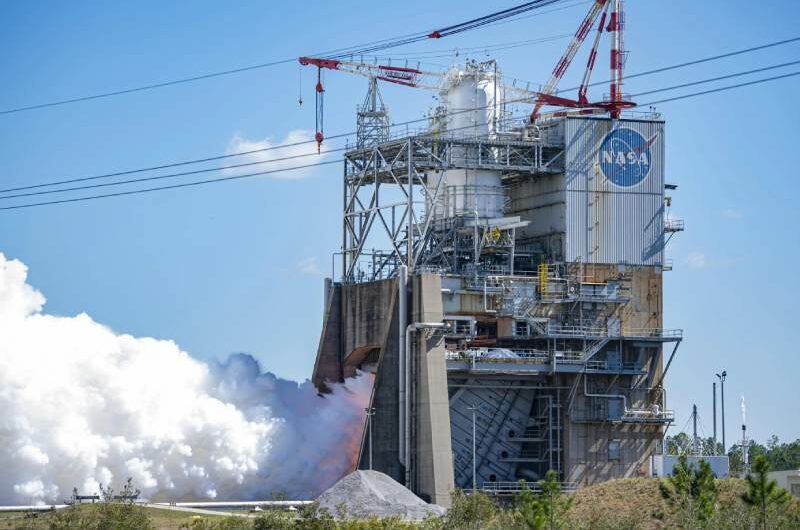An all-sky time-lapse film created from 14 years of data collected by NASA’s Fermi Gamma-ray Space Telescope brings the universe to life. With sporadic bursts of brightness, our Sun quietly makes its way across the sky while being surrounded by high-energy sources both inside and outside of our galaxy.
The images were created by Seth Digel, a senior staff scientist at SLAC National Accelerator Laboratory in Menlo Park, California. “The bright, steady gamma-ray glow of the Milky Way is punctuated by intense, days-long flares of near-light-speed jets powered by supermassive black holes in the cores of distant galaxies,” Digel said. “These dramatic eruptions, which can appear anywhere in the sky, occurred millions to billions of years ago, and their light is just reaching Fermi as we watch.”
The highest-energy type of light is called a gamma ray. The intensity of gamma rays with energies greater than 200 million electron volts that Fermi’s Large Area Telescope (LAT) detected between August 2008 and August 2022 is depicted in the film. In contrast, the energies of visible light range from two to three electron volts. The locations of more intense gamma-ray sources are indicated by brighter colors.
A source that continuously arcs across the screen is among the first things in the film to catch your attention. That’s our Sun; Earth’s yearly orbital motion is reflected in its apparent movement, according to Fermi Deputy Project Scientist Judy Racusin, who provides narration for the film’s tour at NASA’s Goddard Space Flight Center in Greenbelt, Maryland.
Due to the impact of accelerated particles known as cosmic rays, which are atomic nuclei traveling very close to the speed of light, the LAT typically detects the Sun in a faint way. Gamma rays are produced when they hit the gas in the Sun or even the light it produces. But occasionally, the Sun experiences powerful eruptions known as solar flares that cause it to suddenly become one of the brightest gamma-ray sources in the sky for a brief period of time.
Two perspectives of the sky are shown in the film. The center of our galaxy is visible in the center of the rectangular view, which displays the entire sky. This accentuates the Milky Way’s central plane, which radiates gamma rays that are created when cosmic rays collide with interstellar gas and starlight. Numerous other sources, such as neutron stars and supernova remnants, are also scattered throughout it. We can see bright, rapidly changing sources scattered throughout the wider universe above and below this central band, which is our galaxy.
As the majority of these are actually far-off galaxies, it is best to observe them in an alternative perspective that centers on the north and south poles of our galaxy. These galaxies, known as blazars, are all home to a central black hole that is at least one million times the mass of the Sun.
Blazars are observed almost directly down supersonic jets of matter, which intensify their brightness and variability. Black holes, for some reason, produce these jets of matter moving at extremely high speeds. A change in these jets’ characteristics is indicated by the variations, according to Racusin. Regular monitoring of these sources allows to notify other ground-based and space telescopes when something noteworthy is occurring. To better understand these occurrences, will need to gather as many observations as possible. must act quickly to catch these flares before they disappear.
As a vital component of the expanding network of missions collaborating to record these changes in the universe as they occur, Fermi plays a significant role.
A large number of these galaxies are incredibly distant. For instance, the light from the blazar 4C +21.35 has been reaching us for 4.6 billion years, indicating that the current flare-up actually happened during the early stages of the formation of our Sun and solar system. More than twice as far away, other bright blazars collectively offer remarkable snapshots of black hole activity across cosmic time.
Many of the short-duration events that Fermi studies—such as gamma-ray bursts, the strongest cosmic explosions—are not visible in the time-lapse. This is the outcome of sharpening the images over several days by processing data.
Goddard oversees a collaboration between particle physics and astrophysics called the Fermi Gamma-ray Space Telescope. Along with significant assistance from academic institutions and partners in France, Germany, Italy, Japan, Sweden, and the United States, Fermi was developed in partnership with the U.S. Department of Energy.
Topics #Astrophysics #Black Hole Activity #Cosmic #Fermi Gamma Ray #Gamma Ray #NASA











